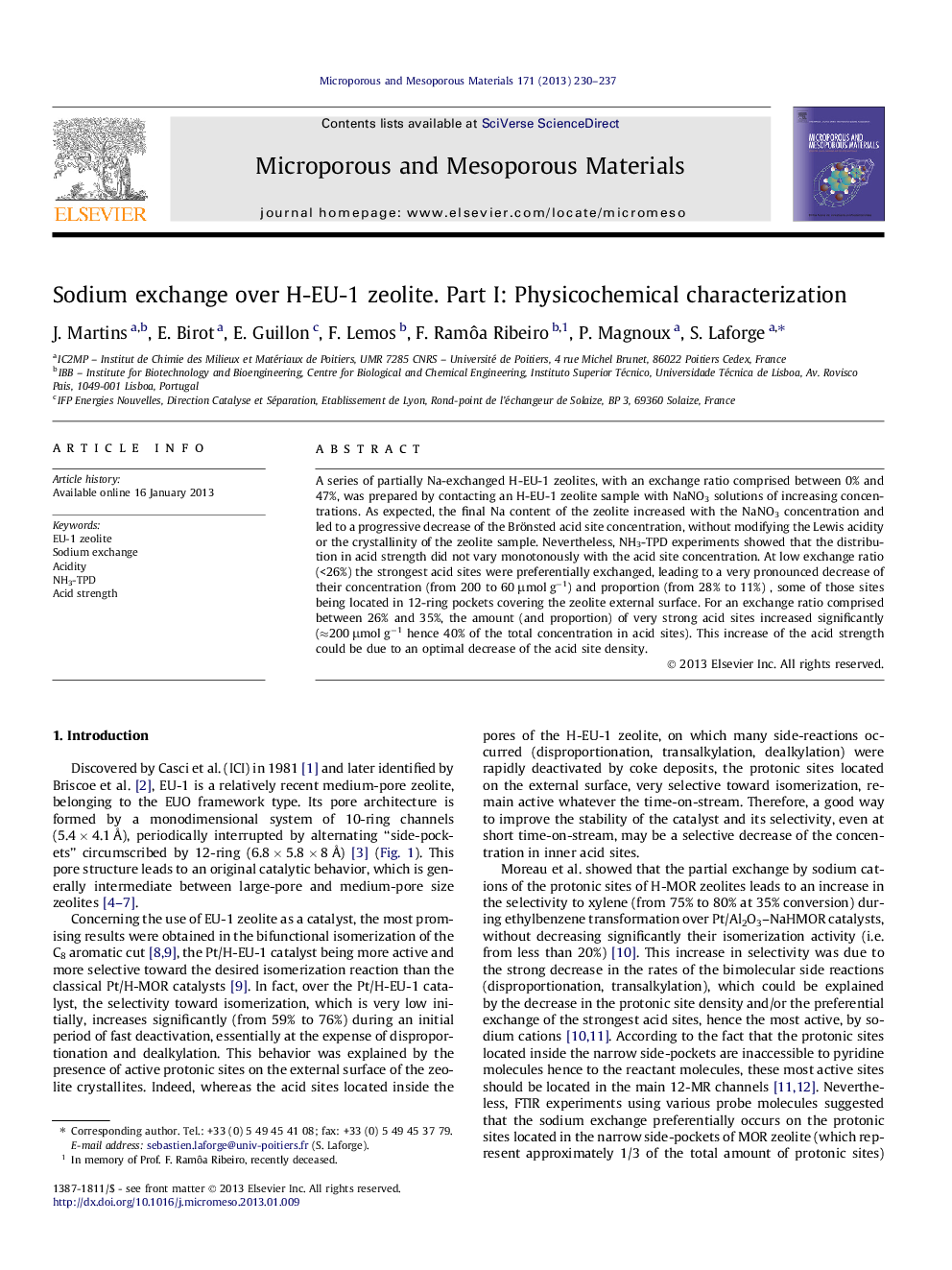| Article ID | Journal | Published Year | Pages | File Type |
|---|---|---|---|---|
| 73829 | Microporous and Mesoporous Materials | 2013 | 8 Pages |
A series of partially Na-exchanged H-EU-1 zeolites, with an exchange ratio comprised between 0% and 47%, was prepared by contacting an H-EU-1 zeolite sample with NaNO3 solutions of increasing concentrations. As expected, the final Na content of the zeolite increased with the NaNO3 concentration and led to a progressive decrease of the Brönsted acid site concentration, without modifying the Lewis acidity or the crystallinity of the zeolite sample. Nevertheless, NH3-TPD experiments showed that the distribution in acid strength did not vary monotonously with the acid site concentration. At low exchange ratio (<26%) the strongest acid sites were preferentially exchanged, leading to a very pronounced decrease of their concentration (from 200 to 60 μmol g−1) and proportion (from 28% to 11%) , some of those sites being located in 12-ring pockets covering the zeolite external surface. For an exchange ratio comprised between 26% and 35%, the amount (and proportion) of very strong acid sites increased significantly (≈200 μmol g−1 hence 40% of the total concentration in acid sites). This increase of the acid strength could be due to an optimal decrease of the acid site density.
Graphical abstractFigure optionsDownload full-size imageDownload as PowerPoint slideHighlights► Na-exchanged H-EU-1 zeolites were prepared with exchange rates up to 50%. ► No detrimental effect of the exchange procedure over the crystallinity and porosity. ► Decrease in protonic acidity but no modification in Lewis acidity with the exchange. ► Optimal concentration in very strong acid site for exchange rate between 26% and 35%. ► Acid sites of external 12-ring pockets and pore mouths were not exchanged similarly.
